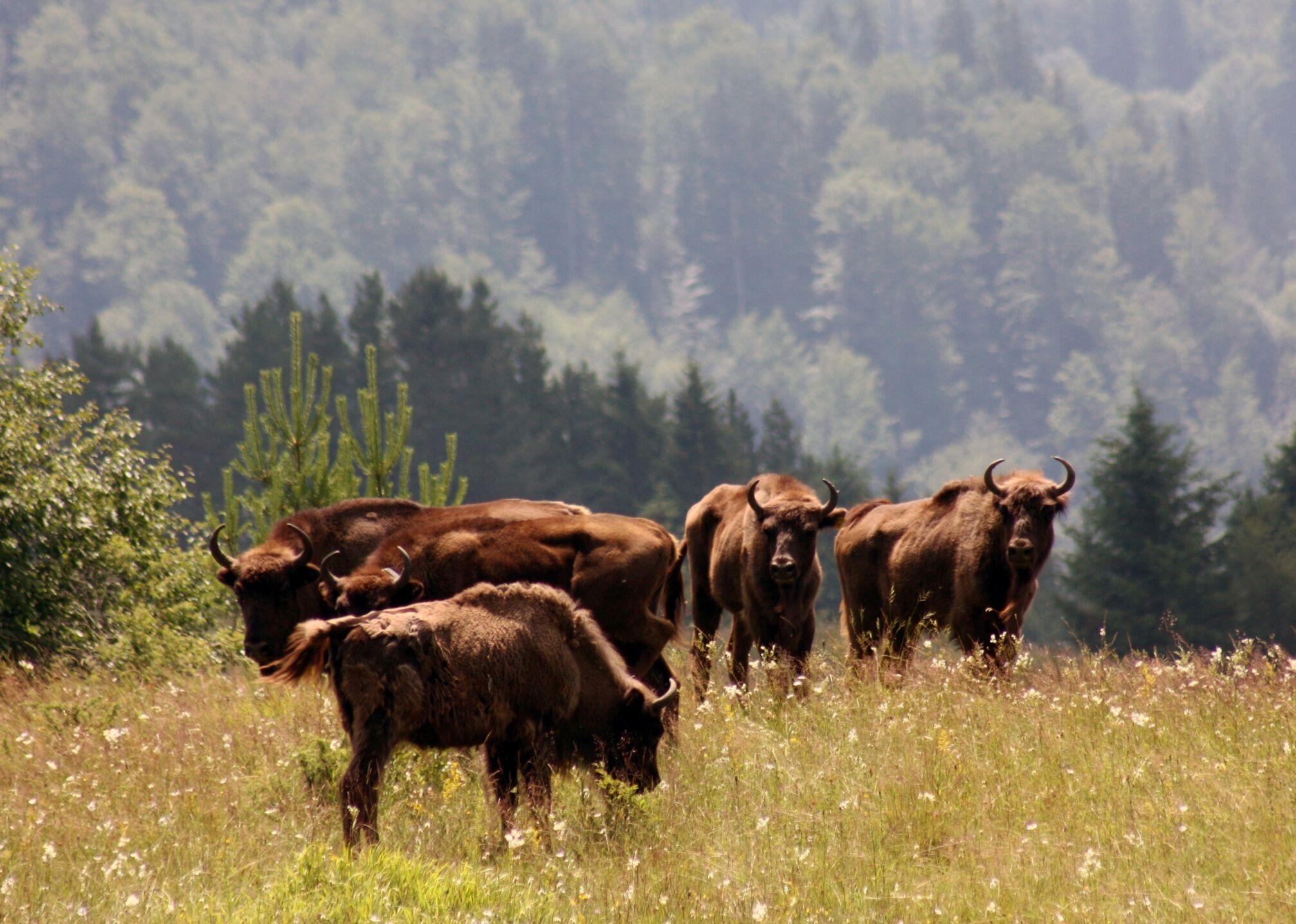Blean woods, a Site of Scientific Special Interest and one of the largest areas of ancient woodland in the UK, sits right beside our campus: it is only a short walk from the School of anthropology and Conservation into Blean. During these unprecedented times, it is a great getaway for a peaceful stroll and maybe even a bit of birdwatching.
It is also to be the site of a new rewilding project being run by Kent Wildlife Trust and Wildwood Trust. Rewilding projects have become increasingly popular, which is not surprising as most people would enjoy introducing something novel to their area, especially if it’s a new type of animal! However, the popularity does depend on the species: whilst the beaver would be exciting for people to spot whilst out in nature, the idea of running into a wolf is less appealing to many. The species being introduced to Blean is the bison, which went extinct in the UK thousands of years ago. As the species that was present here is now extinct, the steppe bison, the European bison has been chosen as a suitable alternative. The animal was chosen due to its ecosystem engineer status – that is, a species which heavily influences their habitat.
We spoke to Dr Joseph William Bull, Senior Lecturer in Conservation Science at the Durrell Institute of Conservation and Ecology (DICE), about reintroduction schemes and the bison:
“The point of reintroduction schemes for rewilding projects is less about conservation of the species that is being re-introduced, and more about the effect that that species has on the ecosystem. You are bringing the species back because it used to play an important role in the way the ecosystem functions, and nothing else is currently playing that role. In some cases, the missing species is now extinct, so you are reintroducing something that plays a similar role. Bison are interesting because they clear small gaps and corridors through dense woodland in a way that increases the structural diversity of the woodland habitat, in turn increasing the availability of microhabitats for certain flora and fauna. They also graze in a way that leads to occasional standing deadwood – an incredibly important, but often missing, component of UK woodlands that harbours all kinds of organisms.
“The bison reintroduction will start in 2022 with a herd of four who will be kept away from the public footpath in a fenced area, which means you will be able to continue visiting Blean as you normally would. Eventually, once the bison are settled, supervised access to the bison area will be allowed. In European countries where bison are present, people are able to walk through populated areas safely, keeping at a respectful distance.”
We also asked the Conservation Society how they felt about having a reintroduction scheme running in the woodland next to our campus:
“Rewilding is a major and important step in stopping the climate crisis. To be able to walk to the area where such a monumental project will take place really inspires conservation students and shows them that important conservation work can (and should be) be carried out anywhere.”
If you want to read more about the bison project, head to the Kent Wildlife Trust’s Wilder Blean webpage.

